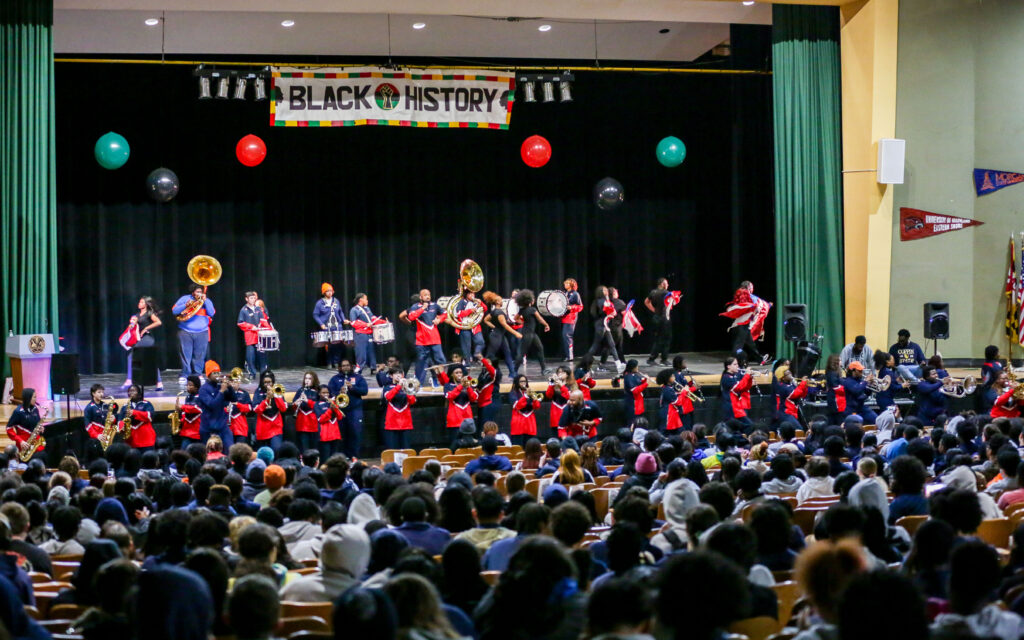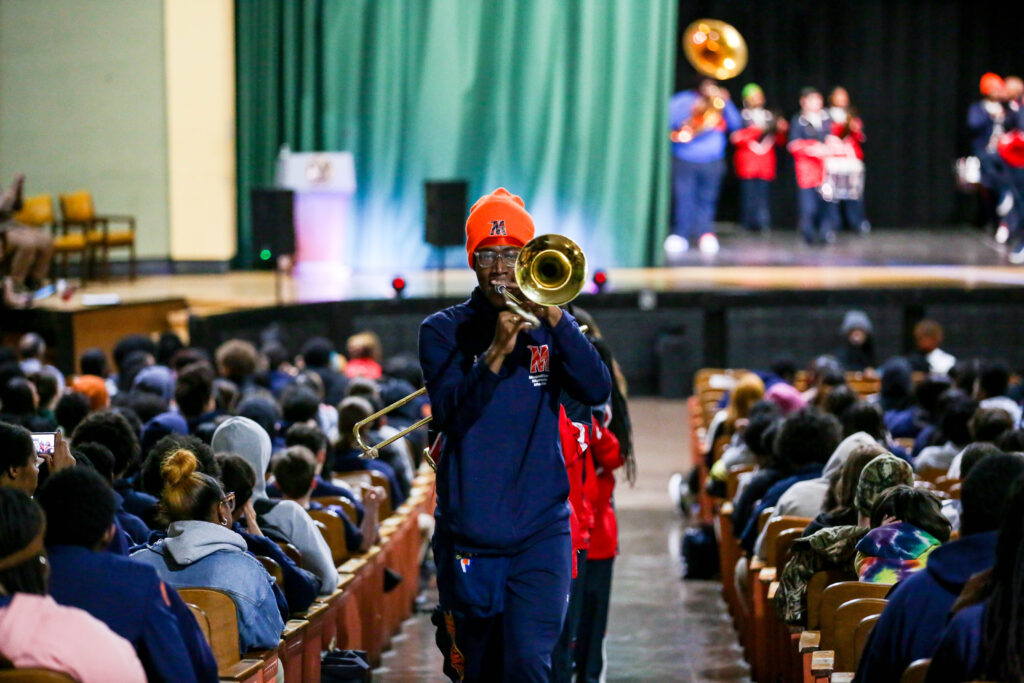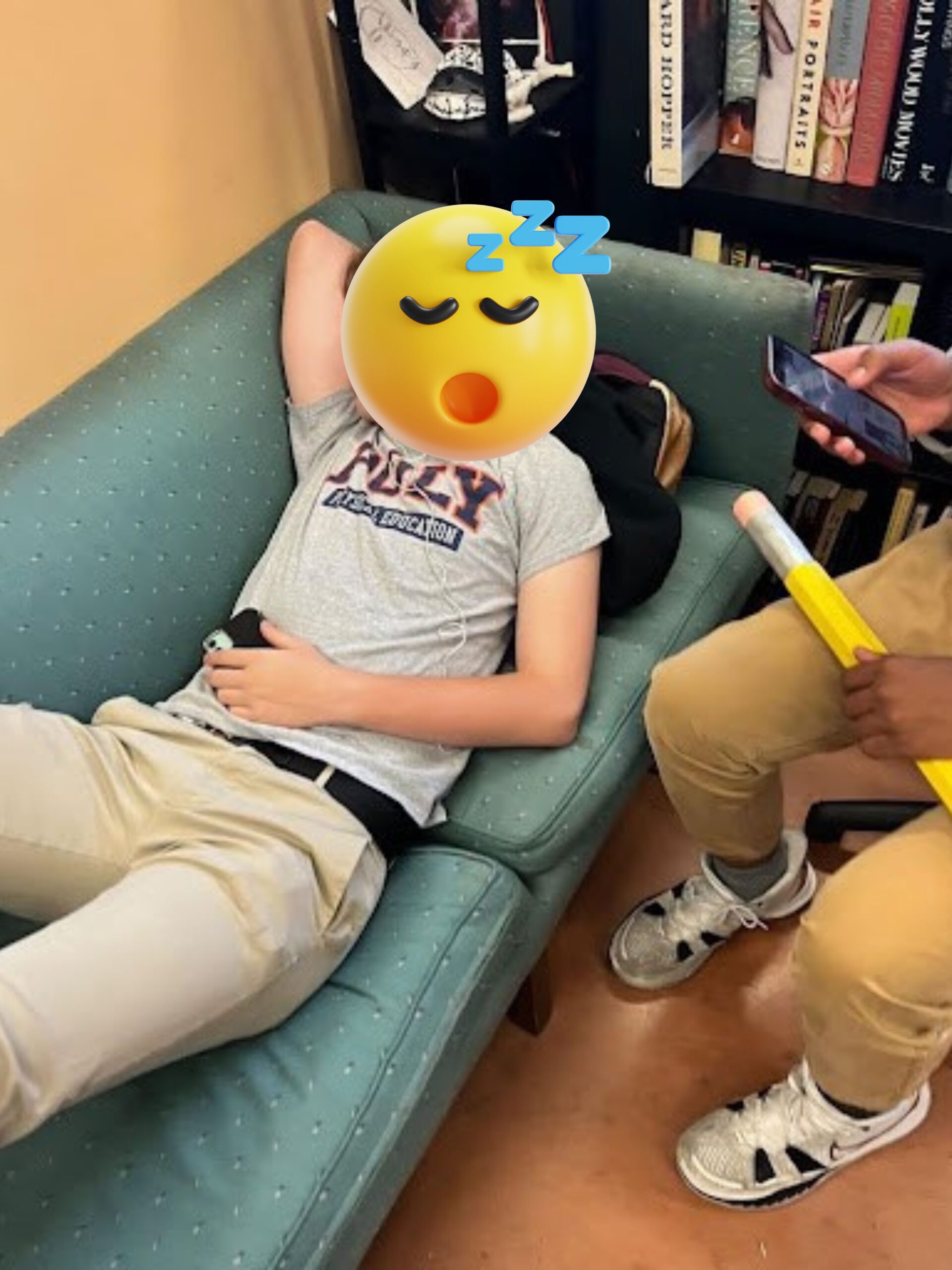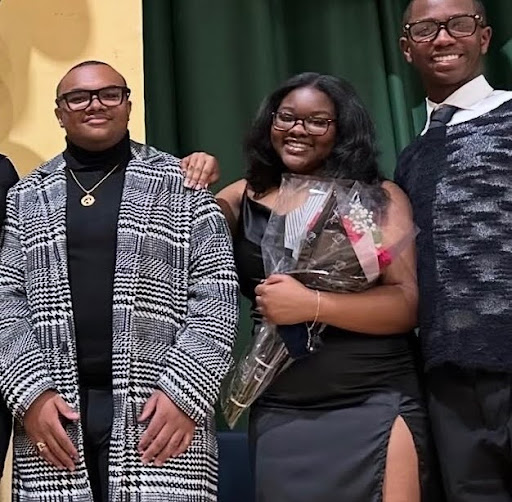Standing at the door of the backstage rehearsal space, I quietly observed the precise movements of the dancers inside. “Tell me your inspiration,” I offered.
“Celebrating Black culture,” explained Poly junior and majorette performer Saniah Wharton. “The way that Black people do majorette is different and it’s unique, and I love it very much. The way we march, and the way we do things in marching bands and colleges… it’s different. I’m proud that I’m finally a part of something that I’ve admired for so long.”
Several months have passed since the Baltimore Polytechnic Institute hosted its commemorative Black History Month assembly, choosing to highlight the influences of local HBCUs and sororities on Black youth today. Representatives from Coppin State, Morgan, the University of Maryland Eastern Shore, and other universities made appearances to spread their messages of youth empowerment and cultural celebration.
PolyTechTalk was onsite to observe and record the representation of Poly’s unique culture expressed through the assembly. We share our experiences with the voices who made it possible to highlight the impact of Black excellence at Poly.
Part 1, Bringing It All Closer.
“It’s a lot of things in isolation, but we’re bringing it all closer,” explains Assistant Director Dixon for the band program. In coordination with Director Queen, he had been developing the Flock’s presentation at the assembly for months prior. An alumni of Poly’s ‘03 cohort and an affiliate of its music program for over 20 years, Mr. Dixon praised the development of the Flock and Black culture throughout Poly’s history. He noted how applicable Poly’s culture had become to its students in the midst of greater representation for HBCUs. Through events like the assembly, such representation has become an overwhelming influence in the Poly community and ingrained itself into school-wide initiatives for the arts and music. “There’s no doubt the connection [between Black history and music]. Every genre of music that you can experience has had some sort of African American influence.”
Midway into the assembly, members of the Flock would come running down the aisles to perform with majorette dancers. “I’m excited,” Flock member Lorraine Coleman digressed before the assembly. “The Morgan State [alumni] who used to be a part of the marching band are coming back to play for the Black History Month assembly. It’s exciting to be here and play their songs with them.” Her voice was thoroughly hoarse from the consistent practice that the Flock took for their performance.


Part 2, The Pendulum of Cultural Representation.
“I think that Poly has always been a great melting pot,” alumni Kim Winder stated. Graduating from Poly in 1985 and achieving a degree in Lincoln University’s pre-medicine program, Ms. Winder returned to observe the assembly as a member of Poly’s alumni association. Like Mr. Dixon, she applauded the advancing opportunities for students at Poly to embrace their culture. “There are so many ethnicities and cultures that are present in this school. It’s nice to see that we are keeping the momentum— the pendulum— of awareness that people of color are represented at our school.”
But some of the most provocative presentations were from student poets Tamaya, Marvellous, and Ariel, who spoke on how legacy can instigate dissatisfaction and fear in Black students. Poly’s six words became six tenets that highlighted the disadvantages placed on minority students. Ariel cited the death of Tyre Nichols as a significant inspiration for their poem on fear and social injustice.
“Black power isn’t always cooperative. To be Black and a female is a controversy,” Tamaya said. She’s the first person in her family to consider pursuing poetry and journalism. “I’m tired of hearing that my Black isn’t enough. I want to be more. At Poly, we try our best to deflect stereotypes. I believe that there are generational curses to be broken.”
Part 3, Black Scholars Coming Together.
“There’s not a lot of usual exposure or outlook on historically Black community universities,” college student Trequan Hayes noted. “They’re available to everyone and more diverse than you’d think.” Members of the Kappa Alpha Psi, Omega Psi Phi, Delta Sigma Theta, Phi Beta Sigma, and other societies supported the recognition of HBCUs during the assembly. The Royal Court of Coppin University, which had included Hayes, claimed that the event would bring Black scholars together in excellence.
“It’s very important to connect to your history at a young age. There’s 107 HBCUs, so there’s a lot to choose from,” offers James Young. “I would definitely say that events like these bring a new awareness. HBCUs weren’t highlighted enough at Poly [when I was a student], so it’s great to see the progress since then.”
After the assembly, student entrepreneur and activist Don McClain commented on the validity of HBCUs as a cultural influence on Black youth. Don prioritizes his efforts to support Black businesses and the voices of LGBT+ students. “While the representation of college sororities can be good, there can sometimes be a negative and overbearing cultural influence.” He challenged the extent of which HBCUs actively help students of color in challenging financial and social situations, reasoning that the costs of attendance with financial aid are still too high for students with socioeconomic disadvantages to thrive at HBCUs. Don remains adamant of the good that we can initiate with the right intentions.
In the months since, Poly students continue to exemplify their excellence through their passions and academic success. Saniah Wharton, Lorraine Coleman, and the Flock diligently prepare for their end-of-year concerts; Don McClain continues to provide a voice to underrepresented youth; and graduating students are being accepted to HBCUs nationwide. As we look back on the stories that were told at the Black History Month assembly, it becomes apparent how prevalent Black voices are to Poly students, alumni, and community.
If you want to share your story, contact the PolyTechTalk team for more information.
Written by Josh Tagle. Interviews by Josh Tagle. Photography courtesy of Maelle Girard-Tsuru, Emily Kelly, and Danae Turner.


